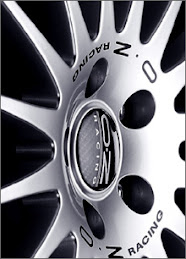Introduction
The Porsche Carrera GT refines the undiluted character of a racing car to provide an unprecedented driving experience of a unique kind. Indeed, the car's performance figures provide a clear picture of what to expect right from the start, the Carrera GT requiring a mere 9.9 seconds to accelerate from 0 – 200 km/h or 124 mph. The Carrera GT has a pure racing engine. Its 10-cylinder powerplant with dry-sump lubrication is based on Porsche's 5.5-liter V10 naturally aspirated engine developed especially for racing. For production, technicians at the Development Center in Weissach, Germany, have increased the displacement to 5.7 liters. And this top-flight athlete offers new records and achievements never seen before in many other areas. Porsche's philosophy to concentrate on the essential comes out particularly in the Carrera GT through the use of consistent lightweight technology in every respect. Measuring 4.61 metres or 181.5" in length, 1.92 metres or 75.6" in width, 1.16 metres or 45.7" in height, and with wheelbase of 2.73 metres or 107.5", the Carrera GT weighs in at an ideal unladen weight of 1380 kilos or 3043 lb.
| Porsche Carrera GT Data | |
|---|---|
| Base Price | $440,000 |
| Power | 605 hp |
| Zero to 60 mph | 3.6 s |
| Zero to 100 mph | N/A |
| Top speed | 205 mph / 330 km/h |
History
Porsche began developing the car in 2000 as a successor to the 911 GT1 car they had discontinued in late 1998 , but the project was abandoned. Porsche started a production run of Carrera GTs in 2004 , shipping the units with an MSRP of $440,000 USD . Originally, a production run of 1,500 cars was slated, But Porsche announced in August, 2005 that it would not continue production of the Carrera GT into 2006 , reducing the total production estimate to 1,250 units. 340 Carrera GTs were sold in the United States in 2005.
Technology
The ten-cylinder power unit behind the cockpit of the Carrera GT is based on a 5.5-litre normal aspiration engine which, as a thoroughbred racing machine, might also have been raced in the 24 Hours of Le Mans. Increasing engine capacity for the Carrera GT to 5.7 litres, Porsche's engineers have now achieved maximum output of 450 kW (612 bhp) at 8000 rpm and maximum torque of 590 Newton metres (435 lb-ft) at 5750 rpm. Top speed is 330 km/h or 205 mph. The Carrera GT is the first production car in the world with a monocoque chassis and module frame made of carbon-fibre reinforced plastic (CFP), a principle Porsche has registered for a patent in the meantime. Advancing into an ultra-high speed range, the Carrera GT obviously requires a spectacular spring and damper set-up to maintain the stability of the car – also at the rear – at all speeds. And again, the solution applied for this purpose comes straight from motorsport, spring/damper elements operated by stainless-steel pushrods and pivot levers being fitted inside the chassis structure. This firm connection to the chassis promotes exact response of the springs and dampers, ensuring safe and secure driving behaviour in the process.





















No comments:
Post a Comment